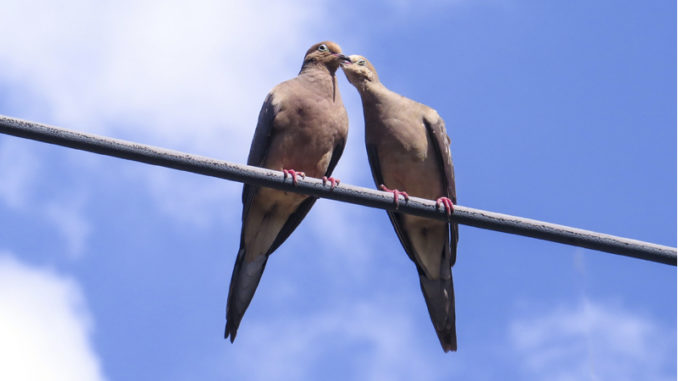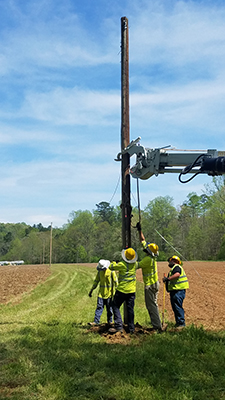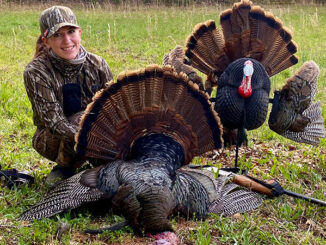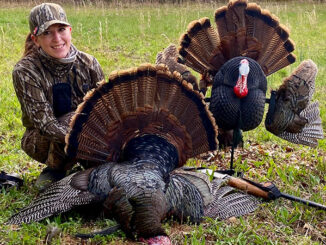
Non-active power lines will help dove activity at Tall Pines WMA
Blue Ridge Electric Cooperative recently donated equipment, staff and poles to put up two segments of non-active power lines at Tall Pines Wildlife Management Area (WMA) dove fields in northern Greenville County.
Power lines stretched across a dove field help both mourning doves and biologists. The lines give mourning doves additional habitat and a place to roost where they can rest and keep their eyes on birds of prey. The lines also give wildlife biologists an easy way to keep track of how many doves are using the fields.
“We really appreciate everything that Blue Ridge did to make these power line structures happen,” said Tammy Wactor Waldrop, S.C. Department of Natural Resources (SCDNR) wildlife biologist based in Clemson. “A contract crew for Blue Ridge worked all day to put these lines up. SCDNR does not have the equipment or expertise to do this, and it would have been very expensive. This just goes to show you how community-oriented Blue Ridge Electric Cooperative is.”
A member-owned utility, Blue Ridge Electric Cooperative serves almost 66,000 members over 6,900 miles of power line. The cooperative currently has 160 employees and also uses a number of contract crews in its line construction and maintenance programs.

Tall Pines WMA holds only public dove fields in Greenville County
The new dove fields at Tall Pines WMA are the only public dove fields in Greenville County and are popular with Upstate area dove hunters. Last year was the first year the fields were established, and SCDNR staff have worked to improve habitat and access. Three fields are located on the property, planted in sunflowers, wheat and millet. Tall Pines WMA dove fields are only open for dove hunting during the designated dove season.
The SCDNR’s public dove field program is made possible by the Federal Aid in Wildlife Restoration Act, a “user-pay” system that takes its funding from the purchase of firearms, ammunition and archery equipment. Since 1939, this system has contributed more than $140 million to South Carolina for wildlife and habitat management and restoration, research, surveys and land acquisition. This conservation funding, while provided by hunters, also helps many more wildlife species that are not hunted. These funds come to South Carolina based on license sales, so the purchase of hunting and fishing licenses—even by folks who don’t hunt or fish—is a big boost for conservation in the Palmetto State. About 50 public dove fields are available statewide. To see the list, visit South Carolina Department of Natural Resources (sc.gov).
The WMA offers more than just dove hunts
Tall Pines WMA is a 1,757-acre property located in northern Greenville County owned by SCDNR. It contains upland and wetland areas, four small lakes, hiking trails, numerous streams and a mile of frontage on the South Saluda River. Mature pines and hardwoods provide a variety of wildlife habitats and outdoor recreation opportunities as well as scenic mountain views. Tall Pines provides abundant recreational opportunities for big-game hunting, with good populations of white-tailed deer, black bears and turkeys.
Tall Pines WMA also provides a key access point to the South Saluda River, which is part of hatchery-supported public trout waters. Trout are stocked primarily during spring and fall seasons to enhance this recreational and economically important fishery.
In addition to the public hunting and fishing opportunities, Tall Pines is a popular recreation area for wildlife observation, bird watching, nature study and wildlife photography. The area provides excellent habitat for a variety of wildlife species that includes birds, mammals, reptiles and amphibians.




Be the first to comment